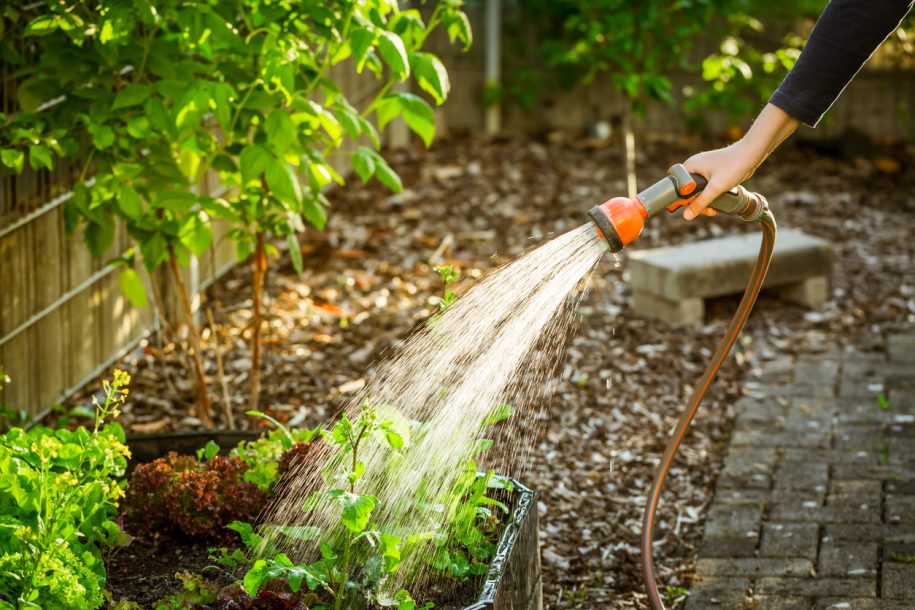Water Plants for Gardening: Optimize Your Watering Schedule
In this article, we’ll explore the basics of efficient plant watering techniques, including the importance of watering frequency and how to establish a watering schedule that works for your garden.
Understanding Watering Needs
Before diving into the specifics of watering frequency and schedules, it’s crucial to understand the watering needs of different plants. Various factors influence how much water your plants require, including:
Plant Type and Their Water Requirements
Different plants have distinct water needs that are crucial to their survival and growth. For instance, succulents and cacti are adapted to arid environments and can store water in their leaves, allowing them to thrive with less frequent watering. In contrast, tropical plants are accustomed to moist conditions and typically require more consistent watering. Understanding the natural habitat of your plants can help you mimic their ideal conditions in your garden, ensuring they receive the appropriate amount of water.
Soil Composition and Its Impact
Soil type plays a significant role in determining how often you need to water your plants. Sandy soils, known for their large particles, allow water to drain quickly, often necessitating more frequent watering to keep plants hydrated. Conversely, clay soils have smaller particles, which retain water longer and may require less frequent irrigation. By assessing your soil type, you can adjust your watering practices to ensure optimal moisture levels for plant health.
Climate Considerations
The climate in which your garden is located greatly influences your plants’ watering needs. In hot, dry climates, the rate of evaporation is high, meaning plants lose water more quickly and need more frequent watering. In cooler, more humid environments, the opposite is true, and plants may require less frequent watering. By understanding your local climate, you can better predict and meet the watering needs of your garden.
Growth Stage and Water Demands
Plants have different water requirements at various stages of their life cycle. Young plants and seedlings are in a critical growth phase and often need more water to support their development. As plants mature, their water needs may decrease as they develop deeper root systems that can access moisture from a larger area. Tailoring your watering practices to the growth stage of your plants ensures they receive the necessary support to thrive.
By taking these factors into account, you can better tailor your watering practices to meet the specific needs of your garden.
Watering Frequency: How Often Should You Water Your Plants?
The key to healthy plants is finding the right balance in watering frequency. Over-watering can lead to root rot, while under-watering can cause plants to wilt and die. Here’s how you can determine the right watering frequency for your plants:
Soil Moisture Test: A Simple Yet Effective Method
A simple way to gauge if your plants need water is by checking the soil moisture. Insert your finger about an inch into the soil. If it feels dry, it’s time to water. If it’s still moist, wait a few more days before checking again. This method is particularly useful for novice gardeners, as it provides a tangible way to assess plant needs without relying on guesswork. For more precision, consider using a moisture meter, which gives a more accurate reading of soil moisture levels.
Plant Observation: Recognizing the Signs
Plants often show signs when they need water. Wilting, yellowing leaves, and slow growth can indicate that your plants are thirsty. Keep an eye on your plants and respond to these signals accordingly. Learning to recognize these signs requires practice, but over time, you’ll become adept at interpreting your plants’ needs. Additionally, observe any changes in leaf texture or color, as these can be early indicators of water stress.
General Guidelines: A Starting Point
While plant-specific needs vary, a general rule of thumb is to water your garden deeply once or twice a week. This encourages deep root growth and makes your plants more resilient to drought conditions. Remember, it’s better to water less frequently with more water than to water lightly every day. This approach not only conserves water but also promotes healthier plants with robust root systems. As you gain experience, you can adjust this guideline to better suit the unique conditions of your garden.
Establishing a Watering Schedule
Creating a watering schedule can help you maintain consistency in your gardening routine. Here’s how you can establish a schedule that works for your garden:
Optimal Timing: Morning Watering Benefits
The best time to water your plants is in the early morning. This allows the water to soak into the soil before the heat of the day causes evaporation. Morning watering also helps prevent diseases that can occur when leaves stay wet overnight. By watering in the morning, you give plants the hydration they need to endure the day’s heat, while also reducing water loss due to evaporation. This practice is particularly beneficial in regions with intense sunlight and high temperatures.
Plant Groupings: Streamlining Your Efforts
When planning your watering schedule, group plants with similar water needs together. This makes it easier to manage their requirements without over- or under-watering any specific plant. By organizing your garden in this way, you can save time and resources while ensuring each plant receives the care it needs. Consider creating zones in your garden based on water requirements, allowing you to tailor your irrigation methods more effectively.
Technological Aids: Using Timers and Systems
If you have a busy schedule, consider using a timer for your irrigation system. This ensures that your plants receive consistent watering, even when you’re not around to do it manually. Automatic systems can be programmed to deliver water at optimal times, reducing the burden of manual watering and minimizing the risk of human error. For tech-savvy gardeners, smart irrigation systems offer even greater control, allowing adjustments based on real-time weather data and soil moisture levels.
Tips for Effective Watering
To maximize the benefits of watering, here are some additional tips to consider:
Mulching: Enhancing Soil Moisture Retention
Applying a layer of mulch around your plants helps retain soil moisture, reduces evaporation, and suppresses weed growth. Organic mulches, like wood chips or straw, decompose over time and add nutrients to the soil. This practice not only conserves water but also improves soil health, creating a more conducive environment for plant growth. In addition to organic options, consider using decorative mulches, which can add aesthetic value to your garden.
Targeted Watering: Focusing on the Roots
When watering, aim to wet the soil directly at the base of the plants rather than the foliage. This reduces the risk of fungal diseases and ensures that the water reaches the roots where it’s needed most. By concentrating your efforts on the root zone, you maximize the efficiency of your watering and enhance plant health. Consider using watering cans with long spouts or soaker hoses for more precise application.
Drip Irrigation: A Water-Saving Solution
Drip irrigation systems deliver water directly to the root zone of plants, minimizing water wastage and ensuring that plants get the moisture they need. They are especially useful for larger gardens or areas with water restrictions. By using drip irrigation, you can reduce water usage by up to 50% compared to traditional methods, making it an environmentally friendly choice. Additionally, these systems can be customized to suit the specific layout and needs of your garden.
Adjusting for Seasonal Changes
As seasons change, so do the watering needs of your garden. During hot summer months, you may need to increase the frequency and amount of water. Conversely, in cooler months, you can reduce watering as plants enter a dormant phase.
Seasonal Adaptations: Responding to Temperature Shifts
In areas with seasonal rainfall, adjust your schedule to account for natural precipitation. Be mindful of weather forecasts to avoid over-watering during rainy periods. Understanding seasonal patterns allows you to anticipate changes in plant needs and make informed adjustments to your watering routine. Additionally, consider implementing rainwater harvesting systems to capture and utilize natural rainfall, reducing dependency on external water sources.
Monitoring and Flexibility: Staying Alert to Changes
Regularly monitor your garden to assess how plants respond to seasonal changes in water availability. Flexibility is key, as different plants may react differently to shifts in temperature and humidity. By staying attuned to your garden’s needs, you can make timely adjustments to ensure optimal plant health. This proactive approach not only supports plant growth but also fosters a deeper connection with your gardening environment.
Conclusion
Watering is a vital component of successful gardening. By understanding the specific needs of your plants and establishing a consistent watering schedule, you can promote healthy growth and create a thriving garden. Remember, the key is to balance watering frequency and depth to suit the individual requirements of your plants.
With these guidelines and tips, you’ll be well-equipped to water your plants effectively, ensuring a beautiful and bountiful garden all season long. By embracing these practices, you not only enhance your garden’s beauty but also contribute to a more sustainable and environmentally responsible gardening approach.


Leave a Reply
You must be logged in to post a comment.